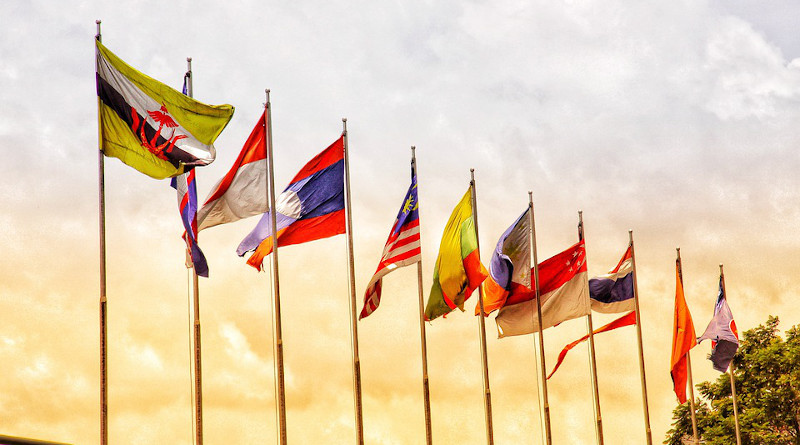
By Patrick Kurniawan
The Association of Southeast Asian Nations (ASEAN), a key player in the Indo-Pacific region, has traditionally upheld the principles of non-interference and non-alignment. Despite all ASEAN member states adhering to the one-China policy, when the threat of invasion and military conflict looms in the Taiwan Strait, ASEAN consistently advocates for ‘maximum restraint’ and urges all parties to refrain from ‘provocative actions’.
Tensions between China and Taiwan have risen since the start of 2024. The Chinese Communist Party has adopted ‘firmer’ rhetoric on reunification, even dropping the mention of ‘peaceful reunification’. The Taiwan Ministry of National Defence has reported increased Chinese military activities in the months before and after the Taiwanese presidential elections.
This uptick in aggression can be attributed to two things. One factor is the victory of Lai Ching-te from the Democratic Progressive Party, whom Beijing despises, in the January 2023 election. Another important factor is the heightened activity and presence of the United Statesand Japanese military in islands near Taiwan. ASEAN fears being drawn into a military conflict and is concerned about the implications of such escalation for its member states.
There are approximately 700,000 Southeast Asian migrants and 30,000 Southeast Asian students residing in Taiwan. ASEAN member states are most concerned with the prospect of a full-scale military conflict, which could complicate the repatriation process of these Southeast Asian nationals.
Taiwan is also a major source of electronic components and integrated circuits imported by ASEAN member states. Plus, a military conflict between Beijing and Taipei would disrupt air and maritime shipping routes to Southeast Asia, resulting in adverse economic consequences. The Taiwan Strait is geographically connected to the South China Sea — a key regional issue for China, Taiwan and four ASEAN member states.
Under the new Enhanced Defense Cooperation Agreement, the United States has gained access to strategic military bases in the Philippines, which could be critical if conflict occurs in the Taiwan Strait or South China Sea. ASEAN is now a key stakeholder in the cross-Strait conflict.
All these concerns have uncharacteristically forced ASEAN to respond to the growing tension in the Taiwan Strait. In August 2022, ASEAN released a Foreign Ministers’ Statement on cross-Strait development, calling on all actors to exercise maximum restraint and refrain from provocative actions. This statement was made right after US House Speaker Nancy Pelosi visited Taiwan.
During the 32nd ASEAN Coordinating Council Meeting and ASEAN Foreign Ministers’ Retreat, ASEAN reaffirmed its readiness to play a constructive role in facilitating peaceful dialogue between all parties. Taiwan has expressed delight over the association’s involvement in the issue.
These two instances mark the first time ASEAN has displayed interest in playing an active role in cross-Strait development, diverging from its traditional reactive approach to external conflicts. Considering China’s economic influence in the region, ASEAN’s willingness to address concerns related to cross-Strait tensions underscores the gravity of the situation. It highlights the potential impacts a military conflict could have on the Indo-Pacific.
Though the specific actions ASEAN might take remain uncertain, it will likely attempt to play a constructive role through two ASEAN-led mechanisms.
One mechanism might involve facilitating constructive dialogue through the ASEAN Regional Forum (ARF). ASEAN’s success in maintaining a semblance of neutrality positions it as a preferred dialogue partner for conflicting states. The ARF can act as a neutral ground for dialogue. The biggest challenge is to bring Taiwan to the discussion table, since all ASEAN member states fully embrace the one-China policy and do not recognise Taiwan as a sovereign state. China’s Belt and Road Initiative will be a pivotal bargaining chip for Beijing to incentivise or dissuade ASEAN states from involvement in its ‘domestic affairs’.
China, a member of the ARF, will likely oppose any effort to invite Taiwan, even as an observer. Taiwan must rely on its key allies in the United States, the European Union, Australia and Japan to protect its interests and to issue statements aimed at reducing tensions in the Taiwan Strait. But achieving output within the ARF, which operates on a consensus-based decision-making model, will prove challenging, as statements favouring Taiwan will likely be blocked by Beijing.
Another mechanism could involve constructive dialogue through the ASEAN Defence Ministers’ Meeting Plus (ADMM+). The ADMM+ convenes defence ministers from ASEAN and eight dialogue partners to strengthen security and defence cooperation, aiming to provide a more effective platform to discuss sensitive issues. ADMM+ has been one of the primary ASEAN-led mechanisms for negotiating South China Sea issues with Beijing.
As ASEAN has expressed its interest in playing a constructive role in cross-Strait development, Taiwan Strait issues could be discussed under the maritime security dimension of ADMM+. Yet, ADMM+ is not an international dispute settlement instrument. It is a forum to establish mutual understanding and promote long-term defence cooperation to ensure regional stability. Even if the mechanism is successful, it could take a long time to see any real impact.
ASEAN is neither willing nor capable of taking on the role of primary mediator. Instead, it offers to facilitate a neutral forum for dialogue and promote multilateral defence cooperation aimed at reducing tension between conflicting parties in the long term. It seems improbable that ASEAN’s involvement will significantly contribute to conflict resolution — rather, it appears more geared towards maintaining the status quo.
- About the author: Patrick Kurniawan is Researcher at the Habibie Center and Research Associate at the Center for Southeast Asian Studies, National Chengchi University.
- Source: This article was published by East Asia Forum
